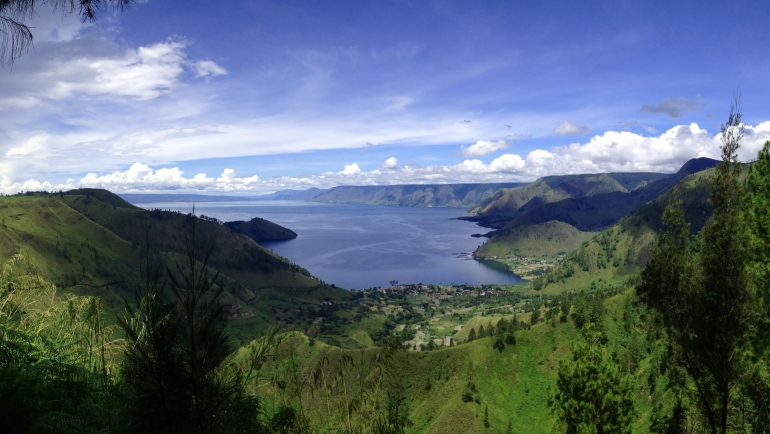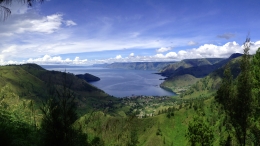There are millions of companies, factories, and even small businesses that rely heavily on electricity. In this new age, almost everything is powered by electricity. With that, the economy of a country is also heavily dependent on electricity and its production. Let’s take a look at Indonesia.
Petroleum is one of the biggest contributors to GDP. It used to contribute to around 30% of Indonesia’s GDP. It currently represents around 25% of GDP in Saudi Arabia and Venezuela, and around 15% in Nigeria and Russia. However, IRENA (2016) stated that the use of renewable energy can help increase global GDP, welfare, and job opportunities.
According to a study by the International Renewable Energy Agency or IRENA (2016), “the findings show that doubling the share of renewables in the final global energy mix increases global GDP in 2030 between 0.6% and 1.1% compared to business as usual. The increase amounts to between USD 706 billion and USD 1.3 trillion.” Furthermore, additional investment in renewable energy leads to higher levels of output and GDP. A lot of countries have been noted to have a large positive impact on GDP due to higher investment, including Ukraine (3.7%), Japan (3.6%), India (2.4%), South Africa (2.2%), the US (1.8%) and Australia (1.7%). Additionally, sectors that deal with renewable energy such as renewable equipment manufacturers and their supply chains would also receive an increase in global production.
As for welfare and job opportunities, IRENA (2016) also reported that doubling the shares of renewable energy also increases welfare around +2.7 to +3.7%. Through the use of renewable energy supply, energy access would also be improved. Energy access is vital for welfare. Currently, according to Ritchie and Roser (2019), 13% of the population does not have access to electricity. Furthermore, the World Economic Forum (2012) reported that the energy sector has played the dual role of fuelling economy-wide development and supported a large number of jobs globally. The change from petroleum to renewable energy would require a lot of manpower. Therefore, this would help countries with high unemployment rates and rely upon labor-intensive processes.
Renewable Energy in Indonesia

According to the Climate Change Performance Index or CCPI (2019), Indonesia has an overall ranking of “low” and a score of 28.18 for the category of “Renewable Energy.” To improve on that Indonesia should improve its use of renewable energy. Indonesia has already tried to rely more on renewable energy. As reported by Indonesia Power, two of their five Power Generation Units (PGU) in Indonesia, are hydroelectric power plants. These two power plants combine to have a total capacity of 1107 MW.
Indonesia is an agricultural archipelago and a tropical country. It is best to maximize the use of solar power, hydropower, geothermal energy, wind power, and biomass. In interviews with Mr. Basuki, Dr. Mardiasmo, and Dr. Reza, they all stated that these sources of energy are all the best suited for Indonesia. According to IESR (2019), some of the renewable energy sources are only effective in specific areas. Solar power is effective for use in the Nusa Tenggara islands because these islands receive the most sunlight than any other area in Indonesia. Wind power is effective for windy areas such as West Java, South Sulawesi, and the Maluku Islands. Geothermal energy is perfect for areas with high volcanic or magma activity. Since Indonesia is at the ring of fire, there are many areas with high volcanic activity such as Dieng and Sinabung. Hydropower can be used almost everywhere. Since Indonesia is a maritime country and a country with significant sources of water. Indonesia could take advantage of ocean waves. Ocean waves are one of the greatest sources since Indonesia is situated between two oceans which combined produce many waves. As for biomass, since Indonesia is an agricultural country and a “traditional” country, it has a lot of livestock. Livestock such as cows can be found all over Indonesia.
Furthermore, In the same interview with Dr. Mardiasmo, he said that countries like Indonesia would benefit significantly from renewable energy production that requires labor-intensive processes. Since Indonesia is the fourth most populated country, Indonesia needs many job opportunities to fulfil the needs of society.
Indonesia has great potential for renewable energy. Indonesia has numerous resources that are valuable to the development of renewable energy. The change from petroleum/fossil fuels may take a long time and affect some of Indonesia’s economy. However, if the goal of a country is to create a sustainable and developed society, and has a high quality of life, the change to renewable energy is vital to the goal. As John Maxwell once said, “Change is inevitable, growth is optional.”
Follow Instagram @kompasianacom juga Tiktok @kompasiana biar nggak ketinggalan event seru komunitas dan tips dapat cuan dari Kompasiana
Baca juga cerita inspiratif langsung dari smartphone kamu dengan bergabung di WhatsApp Channel Kompasiana di SINI









